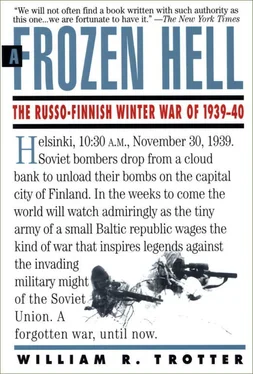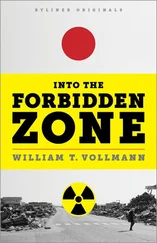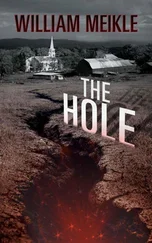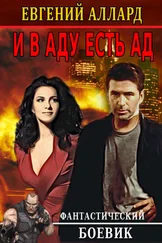William Trotter - A Frozen Hell
Здесь есть возможность читать онлайн «William Trotter - A Frozen Hell» весь текст электронной книги совершенно бесплатно (целиком полную версию без сокращений). В некоторых случаях можно слушать аудио, скачать через торрент в формате fb2 и присутствует краткое содержание. Город: Chapel Hill, Год выпуска: 2000, ISBN: 2000, Издательство: Algonquin Books of Chapel Hill, Жанр: military_history, История, на английском языке. Описание произведения, (предисловие) а так же отзывы посетителей доступны на портале библиотеки ЛибКат.
- Название:A Frozen Hell
- Автор:
- Издательство:Algonquin Books of Chapel Hill
- Жанр:
- Год:2000
- Город:Chapel Hill
- ISBN:978-1565122499
- Рейтинг книги:3 / 5. Голосов: 1
-
Избранное:Добавить в избранное
- Отзывы:
-
Ваша оценка:
- 60
- 1
- 2
- 3
- 4
- 5
A Frozen Hell: краткое содержание, описание и аннотация
Предлагаем к чтению аннотацию, описание, краткое содержание или предисловие (зависит от того, что написал сам автор книги «A Frozen Hell»). Если вы не нашли необходимую информацию о книге — напишите в комментариях, мы постараемся отыскать её.
A Frozen Hell — читать онлайн бесплатно полную книгу (весь текст) целиком
Ниже представлен текст книги, разбитый по страницам. Система сохранения места последней прочитанной страницы, позволяет с удобством читать онлайн бесплатно книгу «A Frozen Hell», без необходимости каждый раз заново искать на чём Вы остановились. Поставьте закладку, и сможете в любой момент перейти на страницу, на которой закончили чтение.
Интервал:
Закладка:
Some idea of the optimistic mood that prevailed, and of the power wielded by political officers over their military counterparts, can be gleaned from an anecdote published in the memoirs of N. N. Voronov, a gentleman who, by World War II, had risen to the rank of chief marshal of artillery. Voronov was in charge of logistics for the guns, a task that would prove herculean, and it was in this capacity that he paid a visit to Meretskov’s headquarters during the waning days of November. Meretskov welcomed him, then kept his mouth shut; most of the talking was done by the artillery officer Kulik and a commissar named Mekhlis. These two asked Voronov what sort of ammunition stocks they could draw on during the coming campaign. “That depends,” replied Voronov: “Are you planning to attack or defend… and by the way, how much time is allotted for the operation?”
“Between ten and twelve days,” was the bland reply.
Voronov was not buying that estimate; all he had to do was look at a map of Finland. “I’ll be happy if everything can be resolved in two or three months.” This remark was greeted with “derisive gibes.” Then-Deputy Commissar Kulik then ordered Voronov to base all his ammo-consumption and fire-support estimates on the assumption that the entire Finnish operation would last twelve days, no more. [2] Bialer, Seweryn, ed., Stalin and His Generals (New York: Pegasus Books, 1969), 132.
Like everybody else in the military profession, Stalin’s generals had been deeply impressed by the success of the Germans’ blitzkrieg tactics. Armored spearheads had sliced through the enemy’s main line of resistance and spread havoc in its rear, followed by masses of infantry to exploit the breakthroughs and deal with bypassed pockets of resistance, the whole thing covered by an umbrella of tactical air support and lavishly supplied with artillery. In terms of hardware and manpower, Russia certainly had all the necessary ingredients to mount its own version of the blitzkrieg.
But German tactical doctrine had been tailored to very specific central European conditions: a familiar landscape with a network of modern roads. Finland was one of the worst places on Earth to attempt the application of a technique that was designed to win battles on the open, rolling, highway-veined topography of continental Europe. Much of the blitzkrieg’s effectiveness stemmed from the fact that armies fighting on mainland Europe had clearly recognizable centers of supply and communication, usually not far behind the lines, which made excellent objectives for armored spearheads. Finnish conditions offered scarcely any comparable targets. Behind the frontier forest there was only more forest. Centers of communication were deep inside the country, not just twenty miles behind the lines.
Nor did the Red generals appreciate the amount of trouble the Wehrmacht had taken to perfect tactical coordination between the component arms, to ensure a reliable and redundant network of communications, and to instill in its frontline commanders a sense of drive and individual initiative. Those very qualities, if displayed in the Red Army, were more apt to earn a man a trip to the gulag than a pat on the back. Many of the battalion and regimental commanders who would lead the Russian attacks were by this time little more than groveling flunkies whose every battlefield decision had to be seconded by a political commissar before orders could go to the troops.
The blitzkrieg, in short, had been perfected for a sleek, hard-muscled, superbly trained, and passionately motivated army, such as the German General Staff had fashioned during the decades between the wars. It was quite unsuited for a ponderous, top-heavy army of ill-trained soldiers led by timid officers, overseen by inexperienced party ideologues, and sent forth to conquer a country whose terrain consists of practically nothing but natural obstacles to military operations.
The Russian generals may have thought they were imitating the Germans, but what they actually unleashed was an offensive more in keeping with an older Russian tradition, whose crude tactics relied on masses of men and sheer weight of metal. The plan called for simply overwhelming, or overawing, the Finns with a massive ground onslaught at every place on the frontier where it seemed feasible to support an attack, coupled with air raids designed to hamper Finnish communications and spread terror among the civilian populace. That populace was supposed to be so restive already that Soviet planners expected their efforts to be augmented by a large “fifth column” deep inside the country.
What happened was something very different. Lacking the freedom to exercise initiative, Russian field commanders relied on mass frontal attacks to obliterate even minor nests of opposition, incurring thousands of needless casualties in the process. Leadership beyond the NCO level was brittle, sluggish, and marked by a rigid adherence to the same primitive tactics over and over again, no matter what the actual situation. The standard of training varied wildly from unit to unit: some regiments were crack troops, well trained and supplied, while others, often thrown in at their side, were scratch units made up of raw draftees, many of whom were so ignorant they didn’t even know the name of the country they were invading.
Whole divisions entered Finland with no worthwhile intelligence estimates of their opposition, guided by hopelessly inaccurate maps, yet fully burdened with truckloads of propaganda material including reams of posters and brass bands. Into some of the densest forests in the world, they brought hundreds of flat-trajectory field guns, useless except at very close range, and relatively few howitzers—guns that could shoot over the trees. Each Russian column lugged into the forest a full complement of modern antitank guns, even though Soviet intelligence must have known the Finns had no operational armor. Virtually useless as field guns, dozens of these weapons were captured intact by the Finns and rapidly redeployed against their former owners.
Most glaring of all, the invading troops were unprepared for winter. It was not until after the first assaults on the Mannerheim Line had been bloodily repulsed that the Russians caught on to the idea of painting their tanks white to match the environment, or of dressing their infantry in snow capes. The invaders had almost no ski training, even though some units received truckloads of wildly unreliable ski-combat manuals just before they crossed into Finland. Apparently the men were expected to become experts in their spare time.
Yet for all its glaring faults, the Russian scheme did have a few things going for it. It was early enough in the year so that conditions, on the Karelian Isthmus at least, were favorable. The surfaces of most of the bogs and smaller lakes had frozen hard enough to present no obstacle to troop movements, but little snow had fallen. There were good roads on the Isthmus, and much of the land was only lightly wooded. But the weather conditions were fickle, and if Meretskov’s troops did not clean out the Finns in two weeks’ time, the full fury of the subarctic winter could be counted on to ruin all timetables. Logic dictated a swift, all-out, thunderclap assault straight across the Isthmus.
But in actuality the advance on the Isthmus was cautious and poorly led. Entire columns were halted, sometimes for hours, by the merest display of Finnish resistance from a few rearguard snipers. North of the Isthmus the Russians wasted thousands of men in operations against the midsection of Finland; these seem to have been planned in the most criminally offhanded manner and then conducted for the most part with glaring incompetence.
The key to Finland was the Isthmus and only the Isthmus; the Finns knew that, and they were surprised that the enemy did not. The reason for this may not be apparent from looking at a map. The Karelian Isthmus appears narrow and sliced up by waterways, lakes, and bogs, altogether a very limited “gateway” for a mechanized invader. In contrast, the same map shows vast, thinly populated regions north of Lake Ladoga, which seem to offer enormous amounts of elbow room and opportunity for maneuver—on paper a much more attractive theater than the cramped, channelized Isthmus. The whole country, in fact, gets quite narrow, and the concept of cutting Finland in two at the “waist” looks very inviting.
Читать дальшеИнтервал:
Закладка:
Похожие книги на «A Frozen Hell»
Представляем Вашему вниманию похожие книги на «A Frozen Hell» списком для выбора. Мы отобрали схожую по названию и смыслу литературу в надежде предоставить читателям больше вариантов отыскать новые, интересные, ещё непрочитанные произведения.
Обсуждение, отзывы о книге «A Frozen Hell» и просто собственные мнения читателей. Оставьте ваши комментарии, напишите, что Вы думаете о произведении, его смысле или главных героях. Укажите что конкретно понравилось, а что нет, и почему Вы так считаете.












